JRDG Company Special – Model 8
The Model 8 was available in various versions:
Model 8 (1992-approx 1998)
Model 8T (approx 1998-approx 2000)
Model 8Ti (approx 2000-approx 2002)
Model 8Ti HC (approx 2000-approx 2002)
A BPS was also available.
Retail price of the Model 8T in 1998 in the Netherlands 17.833 euro
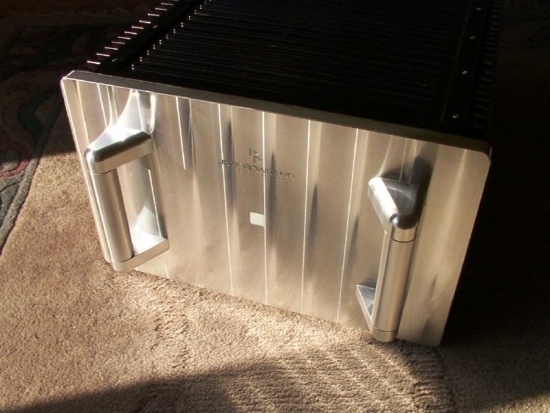
I’ve always thought of this amp as a beefier stereo version of the model 6 and while this may be true for the initial Model 8, successive incarnations of this model are quite different animals that look to have more in common with the model 9. An owner of both told me that the 8 and 9 sound a lot alike. I’m just not sure if he was referring to the initial versions of both, so FWIW…
There was a T, Ti and HC upgrade. The Latest & Greatest Model 8 available was the Model 8TiHC. This is a high current version of the Model 8Ti; it has twice the number of output devices, therefore doubling available output current on demand. From what I can tell, the Model 8T and 8Ti versions used integrated circuits as amplification devicesfavorvour of the bipolar transistors of the initial Model 8.
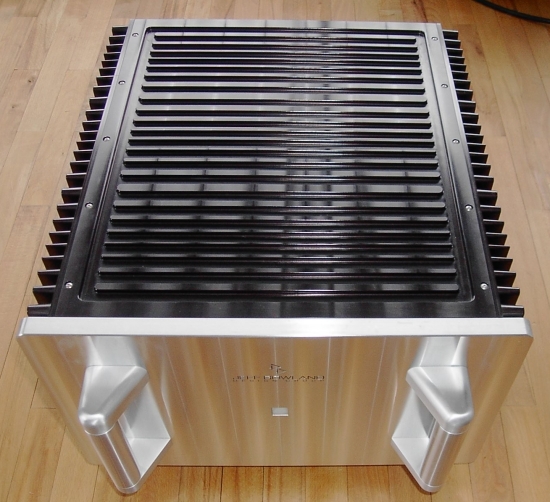
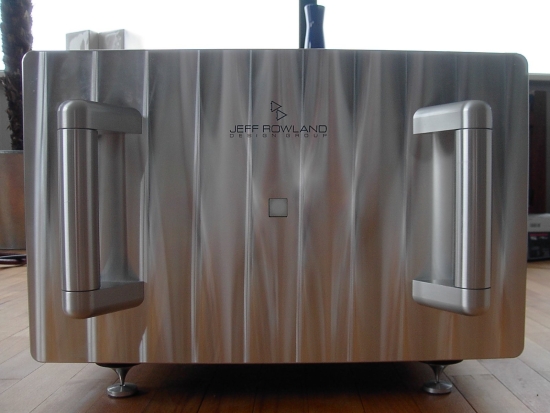
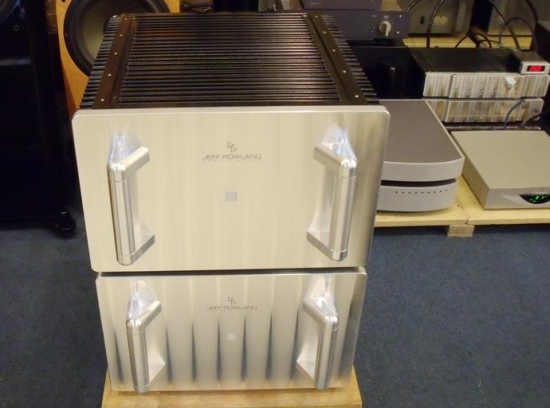
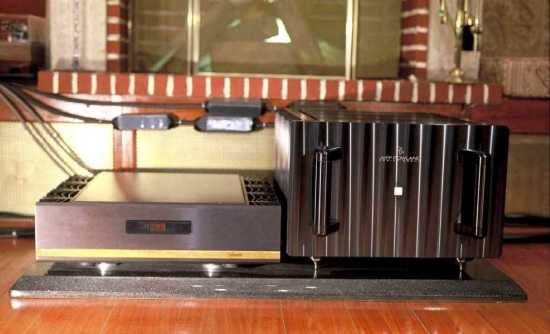
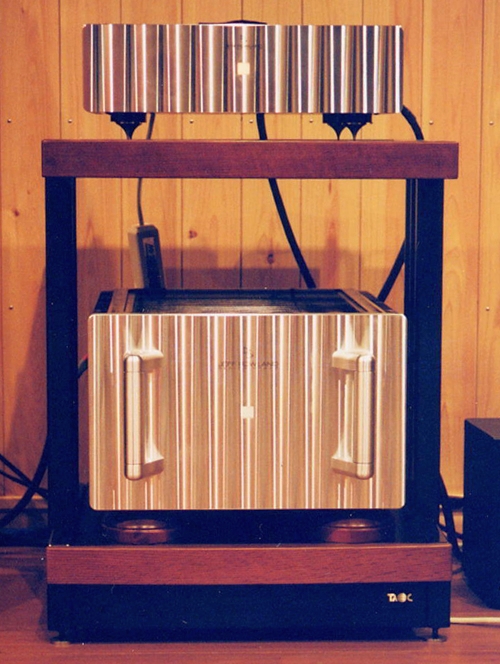
Above: model 8 below with model 6 (so cute) on top
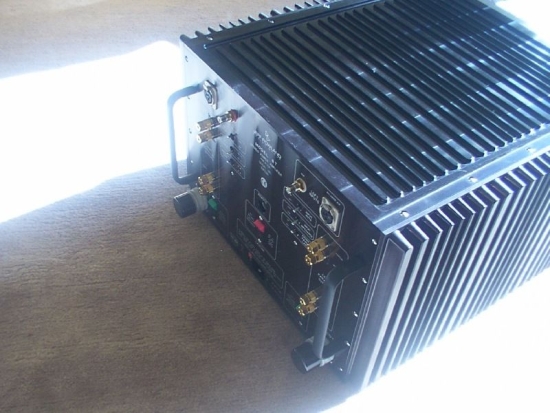
Above: Model 8Ti backside
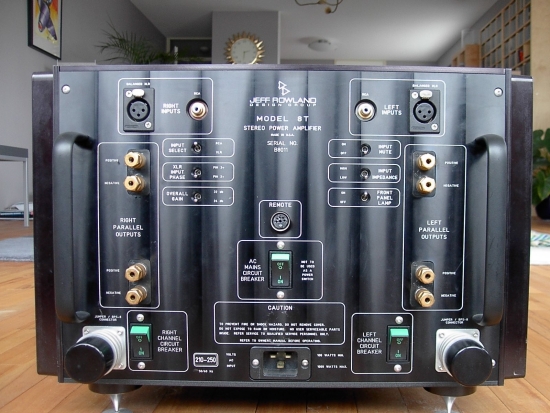
Above: Model 8T backside
Model 8 Updates
All Model 8 amplifiers are eligible for updating. This process involves two steps, as described below:
Update Stage 1:
Model 8 amplifiers between serial numbers A80001 and A80102 may need additional work involving the replacement of power supply components before the unit can be eligible for the Stage 2 update. These units were originally designed with a single “choke-input” power supply which simultaneously powered both right and left channels. The Stage 1 update provides a “dual mono” power supply which consists of totally isolated right and left channel power supplies which allow completion of the Stage 2 update. Since many of the original Model 8 amplifiers (serial numbers A80001-A80102) have already been modified to this stage, it may be necessary to inspect the internal layout of the amplifier in question. Original, unmodified units can be identified by two large black capacitors placed longitudinally from the front to the rear of the amplifier. All modified units can be identified by four large black capacitors placed transversely and clamped between two gold-colored brackets which span the entire length of the amplifier.
Update Stage 2:
An update is available to all amplifiers from serial number A80001 through B80055. This update can be performed independently from any other update, i.e. A80234 does not require the rear panel with battery power supply connections to be eligible for the Stage 2 update; however, unless the amplifier has connections for use with the battery power supply, the unit will not be able to be used with the BPS-8 battery power supply at a future date. This update involves minor modifications to each right and left channel main circuit boards and the replacement of each right and left channel plug-in modules. It provides the greatest sonic performance improvement possible without utilizing the BPS-8 option.
Model 8 Inside Pictures
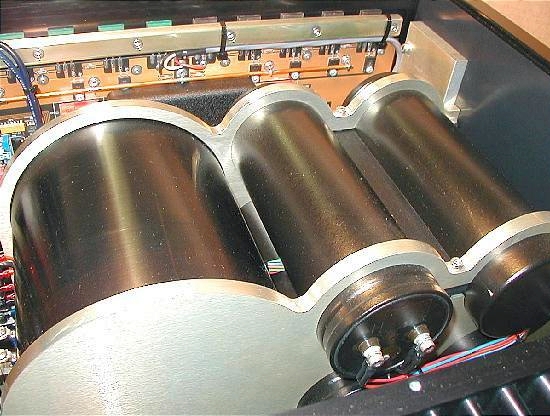
Above: original Model 8 (not Ti), which you can tell from the brown circuit boards and regular bipolar transistors.
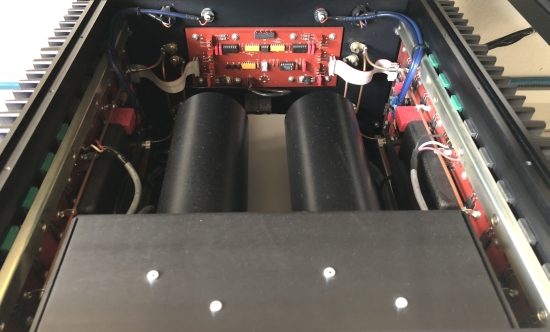
Above: Model 8 with Choke Power Supply (thanks to Torsten Schiemenz for supplying the picture)
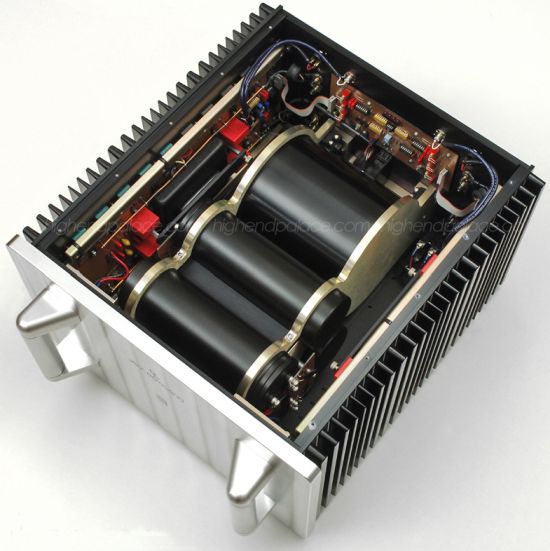
Above and below: Model 8T
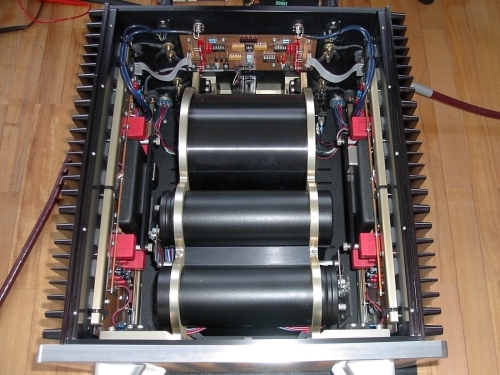
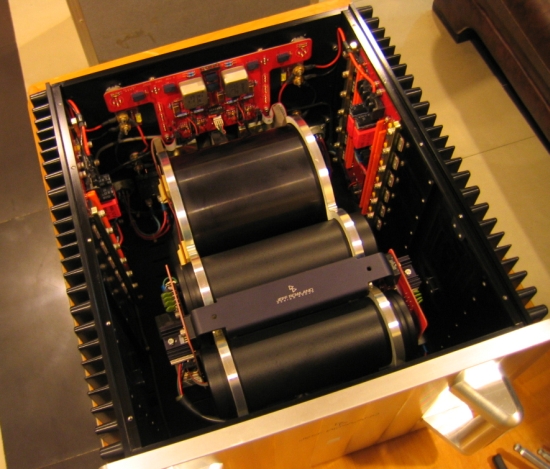
Above: Model 8Ti (distinguished by the red circuit boards)
(Optional) BPS unit DC Cable Compatibility
The model 9 amps used a two pin Fischer connector, male and female on each end with ground carried in the shield and shell. Sometimes the original rubber jacket would degrade and while not affecting the functionality of the cable, a new cable sheath, like heatsink tubing, could be installed over the degraded rubber. In these cases, the Cardas branding would be covered.
The model 2,6 and 8 amps used an Amphenol brand connector of 8 pins to use when connecting BPS battery supplies. These also are all the same within their group and made by Cardas to JRDG spec.
Model 8 Features
XLR Balanced Input jacks for balanced (Differential Mode™) system configurations
RCA Input jacks for unbalanced (single-ended) system configurations
Two parallel connected speaker output connectors for both right and left channels
User-selectable overall gain of 26 or 32 dB
User-selectable input impedance of 36k or 600 ohms for both balanced and unbalanced inputs.
User-selectable absolute phase on balanced input
User-selectable input muting
User-selectable switching between balanced and unbalanced inputs
Front panel standby/power button illumination can be turned off during listening
Optional remote (wired or wireless) power ON/OFF switching
Automatic temperature stabilizing circuitry maintains constant operating temperature
Standby power condition reduces warm-up time
Fail-safe operation provided by user-resettable AC and DC magnetic circuit breakers located on rear panel
Quiet, transient-free operation during power and function mode switching
Automatic input muting under anomalous input or output operating conditions
Balanced Differential Mode™ circuit topology implemented from input to output
Plug-in modules, containing critical electronic circuitry, enhance thermal stability, mechanical integrity, and serviceability
Low-resonance, structurally integrated chassis of precision machined aluminum alloy components
Model 8 Technical Specifications
Output Power Continuous RMS watts
@ 8 ohms 250 watts
@ 4 ohms 400 watts
Power Bandwidth
0.1 Hz to 160 kHz, -3 dB
Slew Rate
30 volts per microsecond
THD and Noise
Less than 0.1% at rated power
Damping Factor
Greater than 100, 20 Hz to 20 kHz, 8 ohms
Output Current
50 amps continuous, 100 amps peak
Overall Gain & Sensitivity
User selectable on rear panel (1 watt, 8 ohms)26 dB or 32 dB; 141 mV or 71 mV
Input Impedance
User selectable on rear panel Unbalanced36k or 600 ohms Balanced36k or 600 ohms
Common Mode Rejection Ratio
Greater than 60 dB, 20 Hz to 20 kHz
Absolute Phase
User selectable on rear panel Unbalanced input Normal Balanced (input Normal or Phase-inverted)
Input Mute
User selectable on rear panel
Power Consumption
100 watts standby; 300 watts operating, idle; 1200 watts maximum
Inputs
User selectable on rear panel Unbalanced2 RCA connector Balanced2 XLR connector
Outputs
2 pair binding posts per channel
Dimensions
17.5 in. (W) x 22 in. (D) x 11.4 in. (H) 44.5 cm (W) x 56 cm (D) x 28.5 cm (H)
Shipping Dimensions
18.0 in. (W) x 24.0 in. (D) x 28.0 in. (H) 45.7 cm (W) x 61 cm (D) x 71.1 cm (H)
Weight
124 lbs. (56 kg)
Shipping Weight
164 lbs. (75 kg)
BPS (Battery Power Supplies)
More Jeff Rowland
Jeff Rowland Company Special Main Page
Jeff Rowland Company Special Power Amplifiers
Hi,
to make the JR Model 8 page complete I could pass you one picture of the very first JRs with the beloved Choke Power Supply…
Kind regards..
Yes please!
You can send it to hifi.advice.info -AT- gmail.com
Need to replace batteries in 8Ti. Anybody know how and battery type. Serial # 80317. Much appreciated. Thankj you in advance
There’s a page right here on HFA dedicated to this, see BPS8.
The model 8 with choke power supply is IMO the model you want to go for..and have Jeff add the newer modules. This is what i did and compared to the 8Ti with the newer power supply, I feel the choke is more resolving across the board. Jeff no longer replaces the choke with his dual mono update, as he has always believed the choke to be superior! Like Torsten above, I am a big fan of the choke power supply and the newer modules, like in his photo!
Hi,
I just picked up an original Model 8 that has lived a rough life (externally). But, plugged it in and sound great!
Serial number is A80288. Has 4 caps mounted transversely. Does not have the BPS connectors.
One question for the other Model 8 owners: how warm are your heatsinks? Mine are just barely warm.
The model 8 is one of the few that I have not owned or heard but a friend has and he confirms that it did not get very warm, even though he had the high-current version.
Hi Christiann, I have my Synergy 2 connected to the 8T in balanced mode. Should I leave the input impedance switch high or low? Thank you!
This is a matter of personal preference: higher gain yields a more immediate/in-your-face sound while low gain maximizes the Synergy’s natural relaxed smoothness.
Christian, Maybe I misphrased my query, I wasn’t referring to the Synergy gain. I was referring to the Input Impedance switch found on the rear panel of the 8T, should I leave it High or Low? Thank you!
Hi Carlos, Sorry, my interpolation filter did its own thing… ;-). The impedance setting has a very similar effect though. There is no right or wrong, just apply as you like. Low sounds smoother and lusher; High sounds crisper and more direct. I personally prefer High and this can also be considered more standard than a low input impedance.
I preferred the impedance switch set to High. I definitely did not care for the low setting.
For gain, I used a couple of db for my DAC and the full 20 db for my phono stage.
Good morning I have a model 8 A80310. When I turn off the amplifier with the “standby/on” button on the front panel it is silent! But if I turn off the amplifier from the rear panel or if I disconnect it from the mains I hear little but clear noises on the speakers! I don’t understand if it can be normal or if the amplifier needs to be overhauled? For the rest in my opinion it works well. Thank you very much
Hi Alessandro, what I know is that the model 6 is never really shut down when using the front panel button. All that supposedly happens is that that bias goes to a very low level and the output is muted. It’s possible that the muting does not take place when you shut it down with the rear panel switch. This may be the same for your model 6. In case of doubt, just ask Jeff.